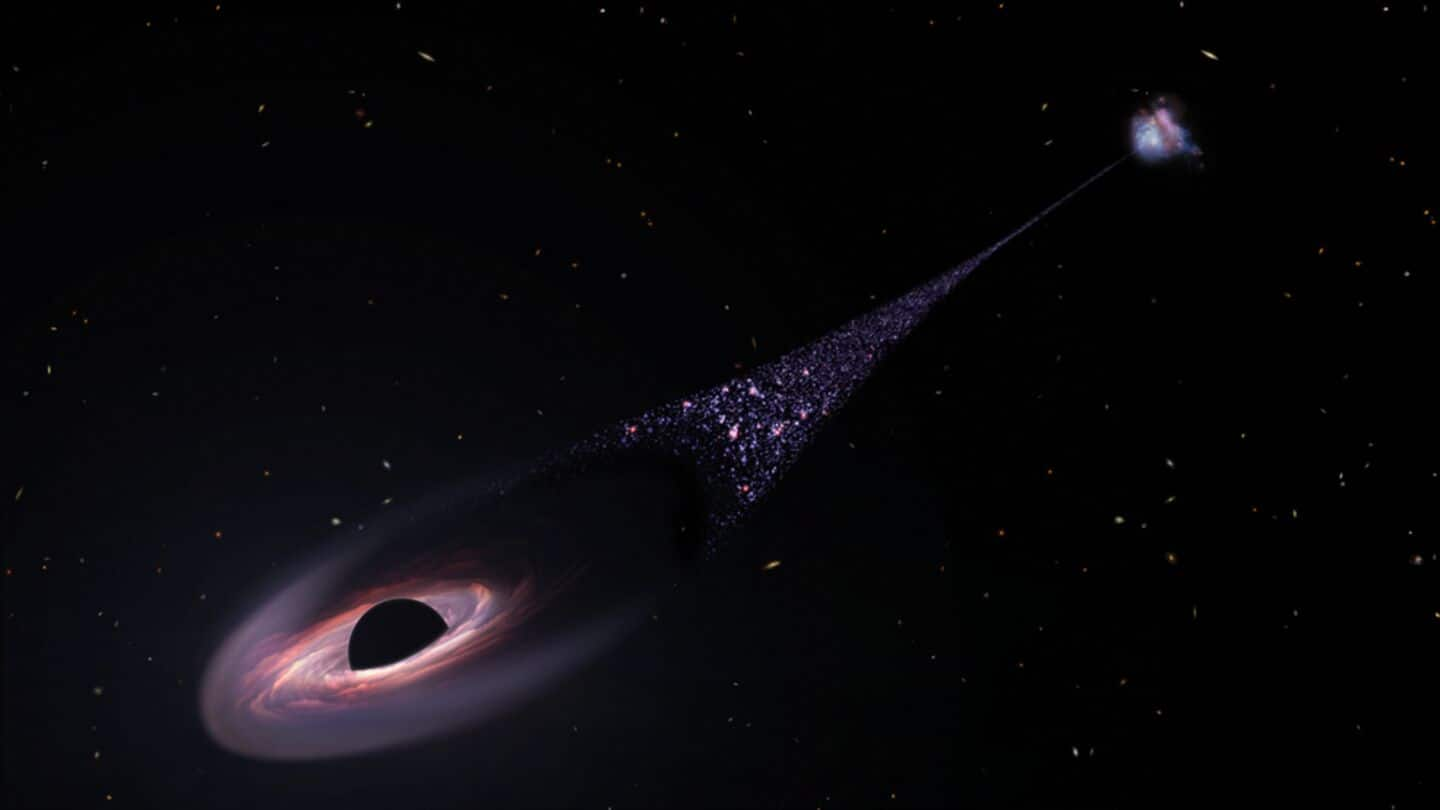
Watch: Rogue distant black hole ripping star to shreds
What's the story
In a groundbreaking discovery, the Hubble Space Telescope has captured a black hole far from the center of its home galaxy, consuming a star. The event, dubbed AT2024tvd, took place around 600 million light-years from Earth. The black hole in question, despite being about a million times more massive than our Sun, wasn't at the center of its host galaxy as is usually the case for such massive entities.
Tidal disruption
Discovery of 'off-center' tidal disruption event
This is the first known case of an "off-center" tidal disruption event (TDE), where a star is stretched and ripped apart by the extreme gravity of a black hole. The study was led by Yuhan Yao, a postdoctoral fellow in the department of astronomy at UC Berkeley. He said that this finding could encourage scientists to look for more examples of such events.
Detection
Bright flare from the event detected
The bright flare from the event was picked up by the Zwicky Transient Facility, an optical camera mounted on a telescope at Palomar Observatory near San Diego. Follow-up observations by Hubble showed that this black hole sits 2,600 light-years away from its galaxy's core. Notably, a much larger black hole sits at the center of this galaxy, with a mass 100 million times that of our Sun.
Dual black holes
Presence of 2 massive black holes in 1 galaxy
Astronomers aren't shocked by the existence of two massive black holes in a single galaxy. Most large galaxies have at least one supermassive black hole at their center. Over cosmic timescales, galaxies often collide and merge, prompting astronomers to theorize that some galaxies may host multiple black holes until they merge into an even bigger one.
Rare events
Rare occurrences of massive black holes consuming stars
These hidden giants typically stay silent, only announcing their presence when they devour nearby stars or gas clouds, creating a short-lived burst of light. It's rare to catch these black holes in action as astronomers believe a massive black hole eats a star once in about 30,000 years. Ryan Chornock, Associate Adjunct Professor of Astronomy at UC Berkeley said such events can light up the presence of massive black holes that otherwise remain undetected.
History
Rogue black hole raises questions about its history
The discovery of a rogue black hole not gravitationally bound to its galaxy's core raises intriguing questions about its history. Astronomers are uncertain how this "rogue" black hole ended up so far from the center. One theory suggests it was ejected during a violent cosmic interaction involving multiple black holes, while another proposes it may have originated from a smaller galaxy that merged with this one over a billion years ago.
Future merger
Potential future merger and detection of gravitational waves
If this black hole is a remnant of a past merger, it could later drift inward and merge with the larger black hole at the galaxy's center. Such a merger might release powerful gravitational waves, ripples in spacetime that may be detected by future space-based observatories such as the Laser Interferometer Space Antenna (LISA), scheduled for launch in 2035. This research has been accepted for publication in The Astrophysical Journal Letters.